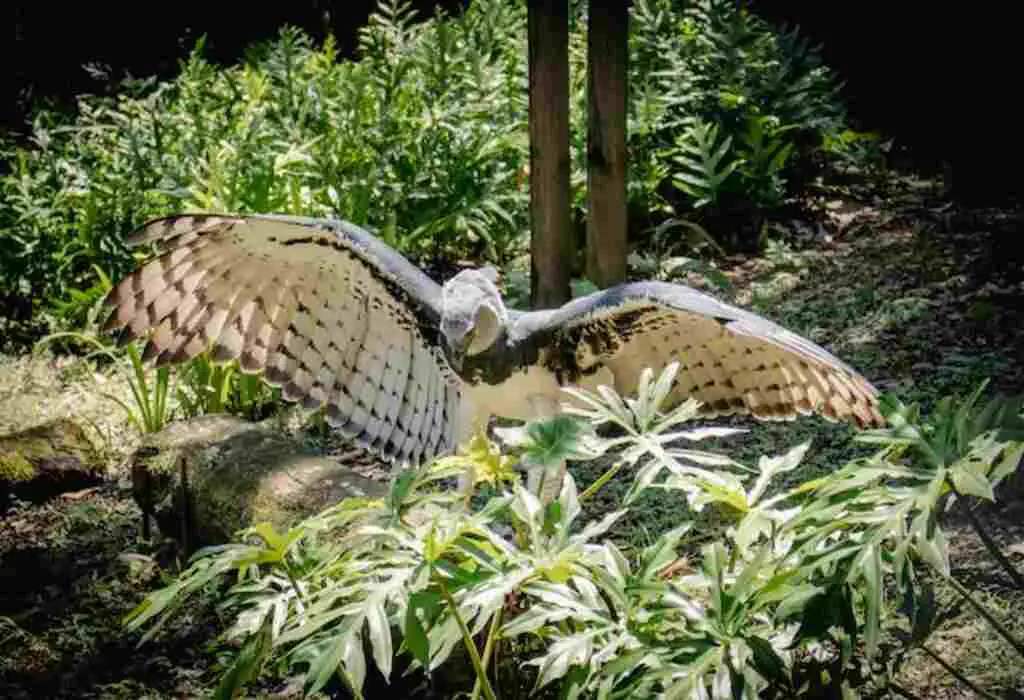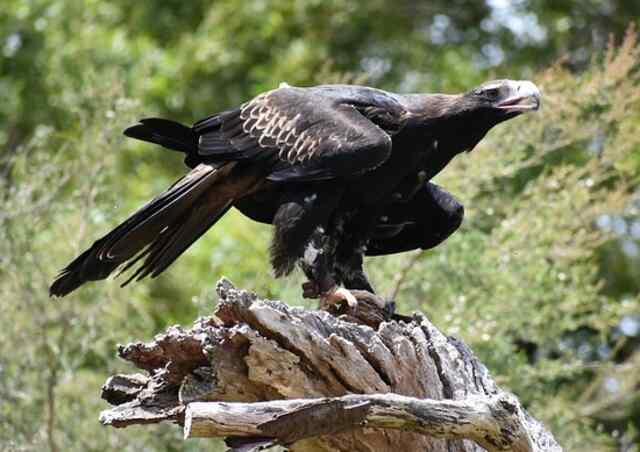Which eagle is the strongest? This question has long intrigued researchers, wildlife enthusiasts, and those who admire the magnificence of these majestic creatures. Eagles are renowned for their unparalleled strength, impressive size, and predatory prowess.
In this article, we will delve into the world of eagles and explore the contenders for the title of the strongest eagle.
Among the formidable contenders are the Bald Eagle, Golden Eagle, Harpy Eagle, Steller’s Sea Eagle, Martial Eagle, African Crowned Eagle, Crested Serpent Eagle, Wedge-tailed Eagle, and Steppe Eagle.
Each of these eagles possesses unique characteristics that contribute to their formidable strength, from powerful talons and muscular bodies to exceptional hunting techniques.
Utilizing an academic and objective approach, we will examine scientific evidence and expert opinions to determine which eagle truly reigns supreme in terms of strength.
By providing detailed information on the physical attributes, hunting strategies, and ecological roles of these eagles, we aim to shed light on the unparalleled power that these avian predators possess.
Join us on this captivating journey as we unravel the mystery and unveil the true champion of the skies, all while maintaining an objective and scientifically accurate perspective.
Table of Contents
Key Takeaways
- The Bald Eagle, Golden Eagle, Harpy Eagle, and African Crowned Eagle are some of the strongest eagle species.
- Each of these eagles has unique characteristics that contribute to their strength, such as powerful talons, impressive wingspans, and hunting techniques.
- Conservation efforts are being made to protect certain eagle species, such as the Wedge-tailed Eagle and Steppe Eagle, from threats like habitat loss and illegal hunting.
- The Steppe Eagle showcases adaptability and resourcefulness by building nests on the ground in open grasslands or semi-deserts, which also serve as habitats for other bird species.
Which Eagle Is The Strongest
The Harpy Eagle is widely regarded as the strongest eagle in the world. With its powerful talons and immense size, it is capable of hunting large prey, including monkeys and sloths. This apex predator’s strength and hunting prowess have earned it the title of the most powerful eagle species.
Bald Eagle
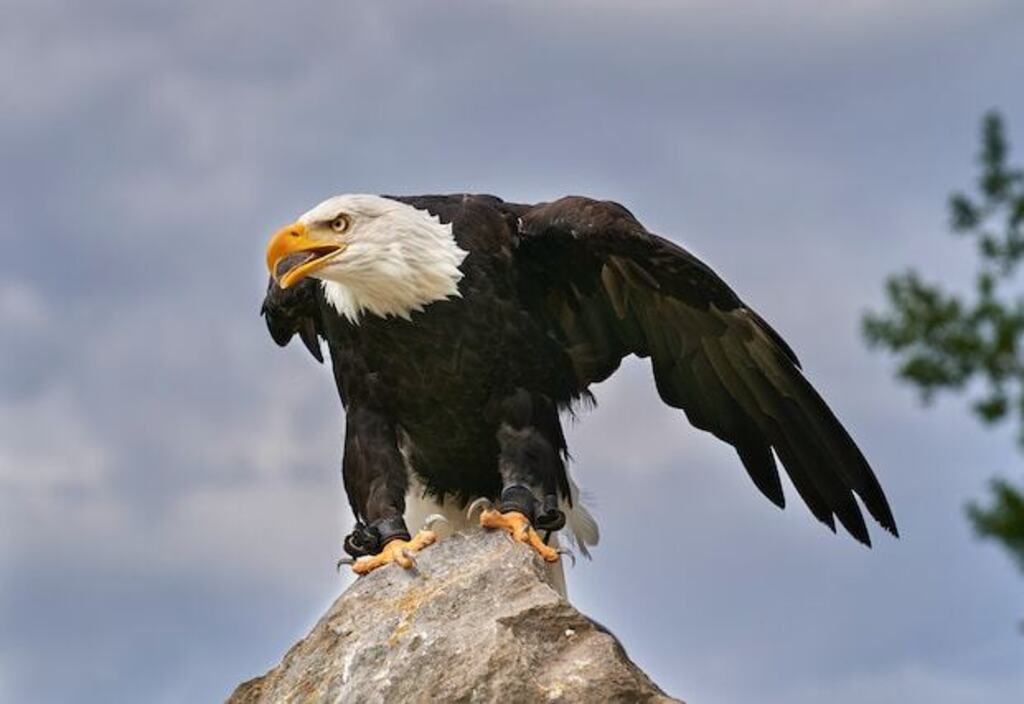
The Bald Eagle, Haliaeetus leucocephalus, is widely regarded as one of the strongest eagle species due to its large size, powerful talons, and impressive wingspan.
With a body length of up to 3 feet and a wingspan that can reach 7 feet, the Bald Eagle is an imposing figure in the avian world.
Its talons are incredibly strong, allowing it to effortlessly capture and carry prey, including fish and small mammals.
Furthermore, the Bald Eagle’s wingspan enables it to soar through the sky with great ease and efficiency.
Conservation efforts have played a crucial role in preserving the Bald Eagle population, as this majestic bird has been a symbol of American culture and national identity.
Transitioning to the subsequent section about the golden eagle, this species also exhibits remarkable strength and prowess in its own right.
Golden Eagle
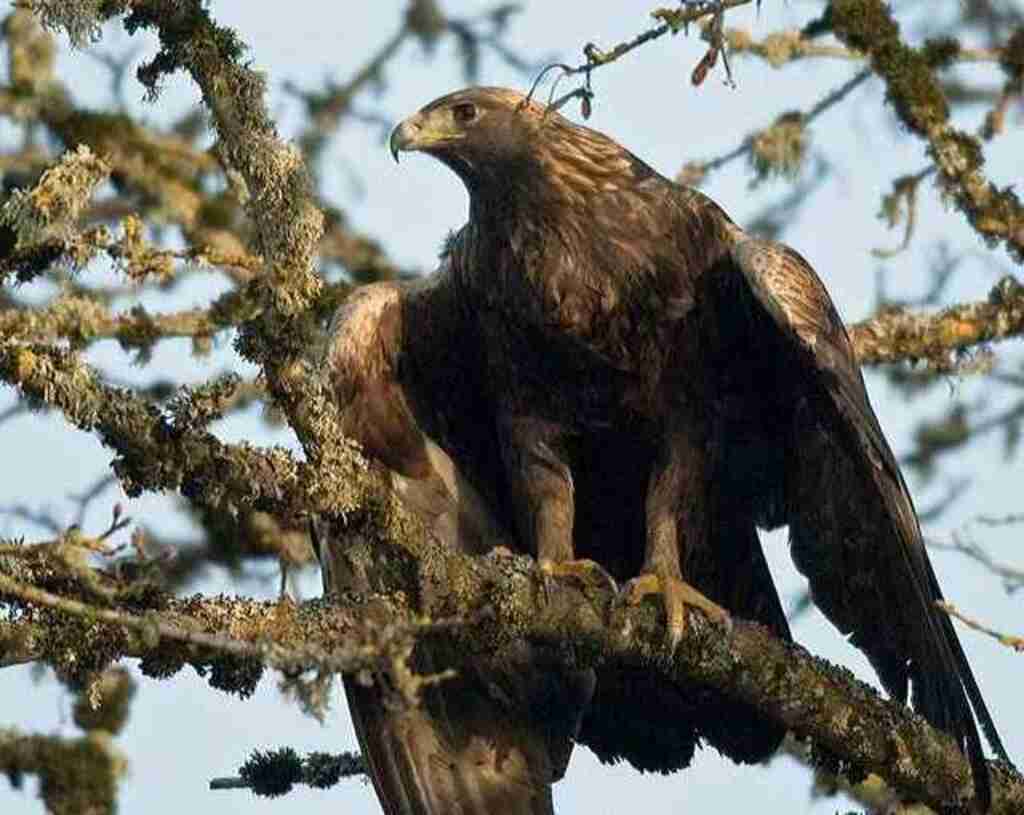
One might argue that the Golden Eagle’s impressive size and powerful talons make it a formidable predator in the avian world.
With a wingspan that can reach up to seven feet and a weight of up to fifteen pounds, the Golden Eagle is one of the largest and strongest eagles on the planet.
Its hunting techniques are highly effective, as it uses its incredible speed and agility to swoop down on its prey, which can range from small mammals like rabbits and squirrels to larger animals such as deer and foxes.
The Golden Eagle’s sharp, curved beak and strong talons allow it to quickly dispatch its prey with precision.
However, despite its strength and hunting prowess, the Golden Eagle faces numerous threats in the wild, including habitat loss, illegal shooting, and collisions with wind turbines.
These factors have led to a decline in their population, making them a species of conservation concern.
Transitioning to the subsequent section about the ‘harpy eagle,’ it is important to note that the Golden Eagle’s strength and hunting abilities are unparalleled in the avian world.
Harpy Eagle
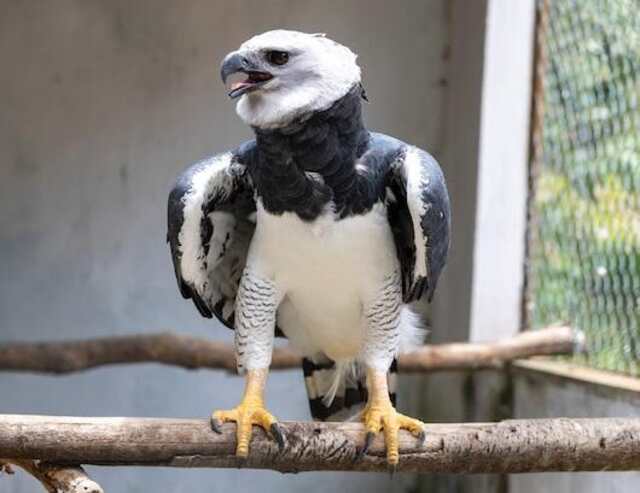
Impressive in size and with a wingspan that can reach up to 6.5 feet, the Harpy Eagle possesses powerful talons and a robust build.
This magnificent bird of prey is known for its unique hunting techniques and plays a crucial role in maintaining the balance of its ecosystem.
Harpy eagles primarily feed on tree-dwelling mammals, such as sloths and monkeys, and are capable of capturing prey as heavy as 17 pounds.
This apex predator is currently facing threats such as habitat loss and illegal hunting.
To ensure the survival of the Harpy Eagle, conservation efforts are being implemented, including the protection of their natural habitats and raising awareness about their importance.
Transitioning to the next subtopic, the Steller’s Sea Eagle, we will explore another remarkable species of eagle.
Steller’s Sea Eagle

Characterized by its striking appearance and powerful hunting skills, the Steller’s Sea Eagle commands attention as a symbol of resilience and adaptability in the face of its harsh Arctic environment.
With a wingspan reaching up to 8 feet and weighing up to 20 pounds, this majestic eagle is one of the largest birds of prey in the world.
Its predatory habits primarily consist of feeding on fish, primarily salmon, supplemented by other marine creatures and seabirds.
The Steller’s Sea Eagle is predominantly found along the coasts and estuaries of eastern Russia and parts of Japan. It prefers habitats with access to both open water and nearby forested areas for nesting.
Its strong talons and powerful beak allow it to catch and tear apart large prey with ease.
Transitioning to the subsequent section about the martial eagle, it is worth exploring another formidable contender in the quest for the strongest eagle.
Martial Eagle
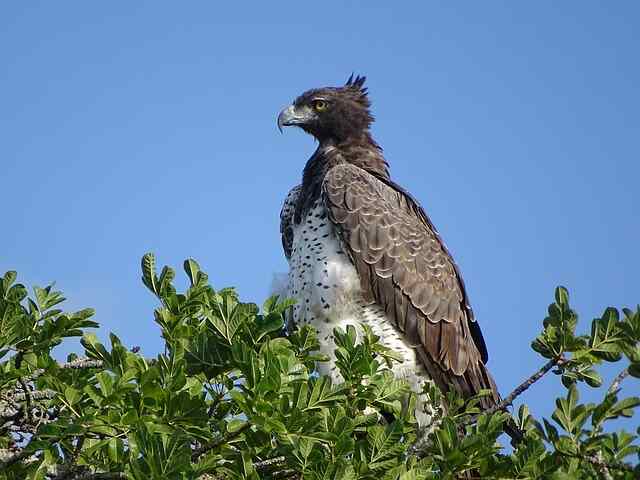
Renowned for its immense size and formidable hunting prowess, the Martial Eagle instills both awe and trepidation with its ability to seize and dispatch prey with ruthless efficiency. This apex predator possesses several hunting techniques that aid in its success.
First, the Martial Eagle employs a stealthy approach, soaring high above its hunting grounds and then diving down at incredible speeds to surprise its prey.
Second, it utilizes its powerful talons, capable of exerting an astounding 500 pounds of pressure per square inch, to firmly grasp and immobilize its victims.
Additionally, the Martial Eagle is known to snatch small mammals, reptiles, and birds in mid-flight, displaying exceptional agility in the air.
When it comes to nesting, this eagle constructs large nests, often reusing them for several years. These nests provide a safe haven for their young, safeguarded from predators and the elements.
Transitioning to the subsequent section about the White-tailed Eagle, this majestic bird of prey showcases its own unique set of characteristics and hunting strategies.
White-tailed Eagle
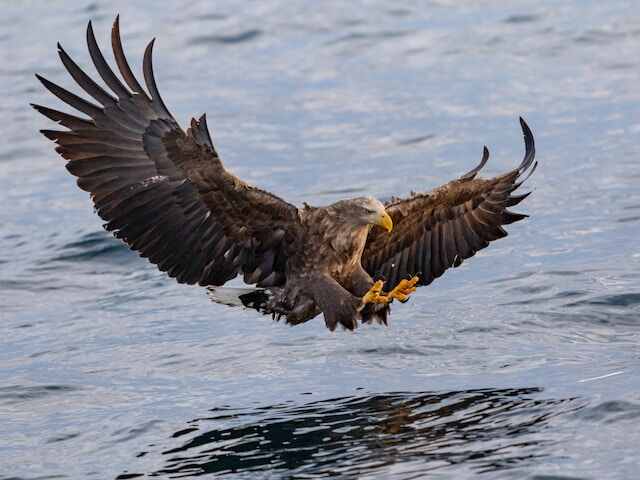
Exhibiting a remarkable wingspan of up to 8 feet, the White-tailed Eagle commands attention with its majestic presence in the sky.
This large eagle species, also known as the Sea Eagle, is found predominantly in Europe and Asia.
Comparing the size and strength of the white-tailed eagle with other eagle species reveals its impressive stature.
With a length of up to 3 feet and a weight of up to 15 pounds, it is one of the largest eagles in the world.
Its powerful talons and sharp beak enable it to capture and prey on a variety of animals, including fish, birds, and mammals.
Analyzing the hunting techniques of the white-tailed eagle in comparison to other eagles, it is known for its opportunistic feeding behavior.
This eagle often scavenges for carrion and steals food from other birds, but it is also capable of hunting its own prey.
It uses its keen eyesight to spot potential targets from great heights, and then swoops down with incredible speed to snatch its prey. Its strong wings and impressive aerial agility make it a formidable predator.
Transitioning to the subsequent section about the Philippine Eagle, it is important to consider another magnificent eagle species that resides in Southeast Asia.
Philippine Eagle

The Philippine Eagle, known as the ‘monkey-eating eagle,’ holds the title of the largest eagle in the world in terms of length, with a wingspan that can reach up to 7 feet.
This majestic bird is found exclusively in the forests of the Philippines and is considered a national symbol.
Conservation efforts for the Philippine eagle have been initiated to protect its dwindling population. The main threats faced by this species include habitat loss due to deforestation, hunting, and illegal trade.
The Philippine Eagle Foundation has been working tirelessly to raise awareness and implement conservation measures to ensure the survival of this magnificent bird.
Despite these efforts, the Philippine eagle remains critically endangered.
Transitioning to the African Crowned Eagle, another formidable contender in the world of eagles.
African Crowned Eagle
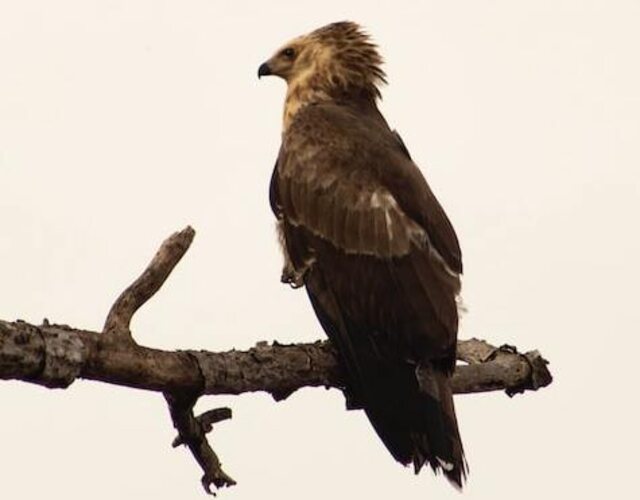
The African Crowned Eagle (Stephanoaetus coronatus) is another formidable eagle that rivals the strength of the Philippine Eagle.
Found in the dense forests of Sub-Saharan Africa, this impressive bird of prey is known for its powerful build and hunting prowess.
With a body length of up to 3 feet and a wingspan of 6 to 7 feet, the African Crowned Eagle possesses immense strength.
It has powerful talons capable of exerting a force of over 600 pounds per square inch, enabling it to capture and kill prey such as monkeys and small antelopes.
When comparing the strength of the African Crowned Eagle to other large eagles, it stands out as one of the most powerful.
However, there are other eagles, such as the Crested Serpent Eagle, that also possess remarkable strength.
Crested Serpent Eagle
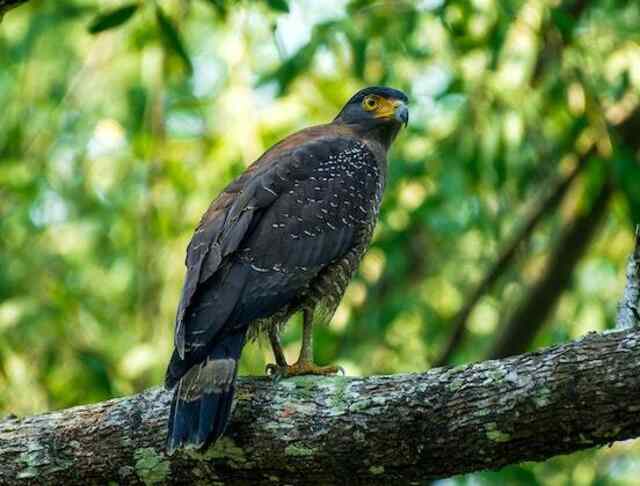
With its striking appearance and impressive hunting abilities, the Crested Serpent Eagle of Southeast Asia is a captivating predator.
This eagle, also known as the Spilornis cheela, is well-adapted to its forested habitats, where it can be found perched on tall trees or soaring through the sky.
The Crested Serpent Eagle primarily preys on reptiles, particularly snakes, which makes up a significant portion of its diet.
It employs various hunting techniques, including perching and waiting patiently for its prey to appear, or engaging in aerial pursuits to catch snakes in mid-air.
This eagle’s long, sharp talons and powerful beak enable it to capture and subdue its prey effectively. Its exceptional eyesight allows it to spot even camouflaged snakes from a distance.
The Crested Serpent Eagle’s hunting prowess and adaptability to diverse habitats contribute to its status as one of the strongest eagles in the avian kingdom.
| Hunting Techniques | Habitat Preferences |
|---|---|
| Perching and waiting for prey | Forested habitats |
| Aerial pursuits | Tall trees |
| Excellent eyesight | Southeast Asia |
| Sharp talons and powerful beak | Diverse habitats |
Transitioning to the subsequent section, the discussion now turns to the next contender for the title of the strongest eagle, the Wedge-tailed Eagle.
Wedge-tailed Eagle
Transitioning from the captivating Crested Serpent Eagle, the focus now shifts to another formidable contender for avian supremacy, the Wedge-tailed Eagle.
With a wingspan that can reach up to 2.7 meters, the Wedge-tailed Eagle is one of the largest eagles in the world.
This majestic bird is predominantly found in Australia, where it inhabits a diverse range of habitats, from deserts to forests.
The Wedge-tailed Eagle is known for its impressive hunting capabilities, preying on a variety of animals such as rabbits, kangaroos, and even small livestock.
Despite its power and adaptability, this magnificent species faces numerous threats, including habitat loss, poisoning, and collisions with vehicles.
To combat these challenges, conservation efforts have been implemented, such as protected areas and awareness campaigns.
Transitioning to the subsequent section about the Steppe Eagle, we delve into yet another remarkable contender for avian supremacy.
Steppe Eagle

The Wedge-tailed Eagle, previously discussed, is known for its impressive hunting skills and large size. Now, let’s shift our focus to the Steppe Eagle.
Steppe Eagles are found in parts of Eastern Europe, Central Asia, and Russia. These eagles are known for their strong conservation efforts to protect their population.
Conservation organizations have been working to reduce habitat loss, illegal hunting, and poisoning, which have posed significant threats to the steppe eagles.
Steppe Eagles are also unique in terms of their nesting behavior. They typically build their nests on the ground, often in open grasslands or semi-deserts.
These nests are large and bulky, made up of sticks and branches. Interestingly, steppe eagle nests often serve as a habitat for other bird species, creating a diverse ecosystem within a single nest.
This nesting behavior showcases the adaptability and resourcefulness of the steppe eagle.
Frequently Asked Questions
How long do eagles typically live?
The lifespan of eagles varies depending on the species, with the average range being between 20 to 30 years. However, some eagles, such as the bald eagle, can live up to 40 years in the wild.
What is the average wingspan of an eagle?
The average wingspan of an eagle varies depending on the species, but it generally ranges from 5.9 to 7.5 feet. Eagles inhabit diverse habitats worldwide, including forests, mountains, and coastal areas.
How do eagles hunt for their prey?
Eagles employ various hunting techniques to capture their prey. They use their exceptional eyesight to spot potential targets from great distances, then dive swiftly and skillfully to seize them. Eagles typically target smaller animals, such as rabbits, fish, and birds.
Are all eagles found in the same regions around the world?
Eagle migration patterns vary among different species. They can be found in various regions worldwide, including North America, Europe, Africa, and Asia. Their distribution is influenced by factors such as habitat availability and prey abundance.
What are the main threats to eagle populations in the wild?
The main threats to eagle populations in the wild include habitat loss and illegal hunting. These impacts have led to declines in eagle populations worldwide. Conservation efforts are crucial for the protection and preservation of eagles.

